
Pandibosco, 2024-25
Pandibosco (Forest’s Bread) Installation: HD short video with sound, 12 min: Memories of an empty stomach; wooden cuttingboards with eggtempera drawings of mythologiecal creatures in various sizes; Cooking-Intervention (cooking Knödel).
![]()
![]()
![]()
![]()
![]()
![]()
Images: Knödel – cooking intervention
The name Pandibosco (forest bread) emerged during a conversation with a family member about the transmission of stories and food traditions, reflecting the challenges of forest and mountain life. This ongoing project explores mythologies and cultural movement through „poor cuisine.“ These dishes reveal cultural interconnections.
Central to Pandibosco is the Knödel, an Alpine dumpling made from old bread. The Alps serve as a cultural crossroads, shaped by both hardship and diverse influences. The earliest depictions of dumplings appear in 12th-century frescoes, and mythical creatures show the influence of travelers from Mesopotamia and Greece—not just carried by people, but also through stories. These elements appear in egg tempera paintings, evoking alpine folklore.
The work includes the video Memories of an Empty Stomach, which presents interviews with two nuns who recount their childhood memories and daily food consumption before the 1950s. These oral histories are interwoven with personal footage from my grandfather‘s Super 8 camera, capturing mountain landscapes —a symbol of longing and the boundless imagination of distant connections.
Pandibosco (Forest’s Bread) Installation: HD short video with sound, 12 min: Memories of an empty stomach; wooden cuttingboards with eggtempera drawings of mythologiecal creatures in various sizes; Cooking-Intervention (cooking Knödel).
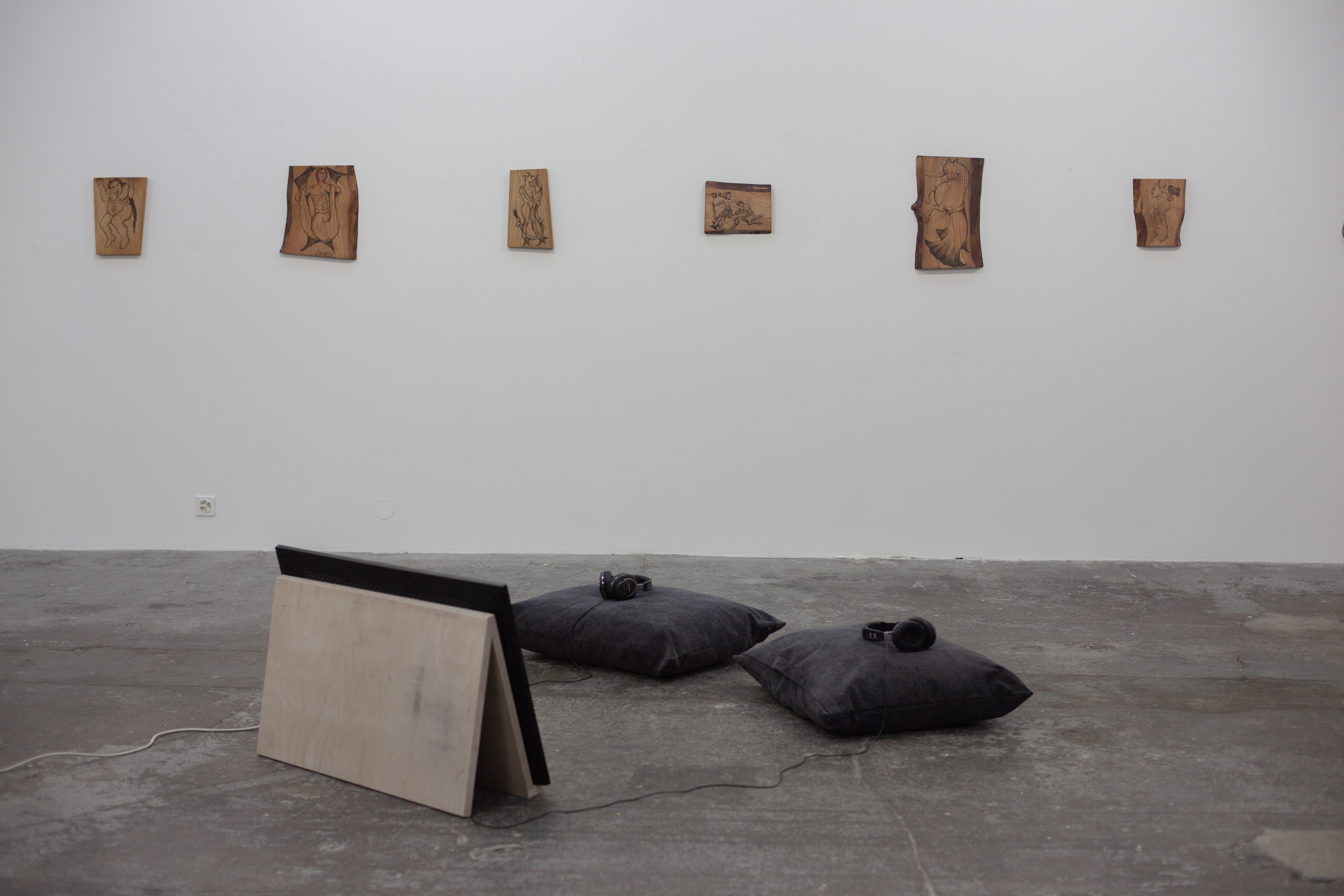
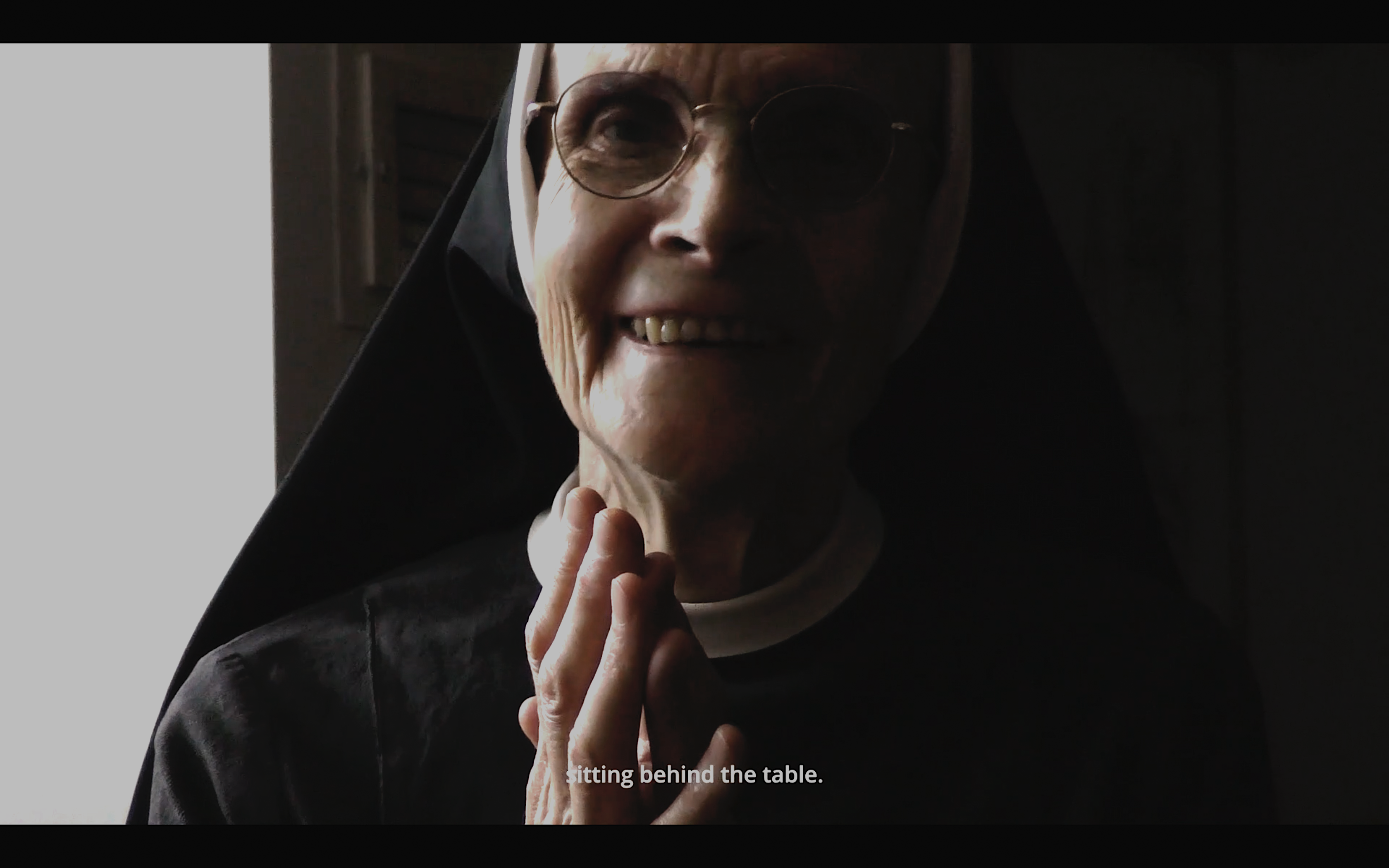
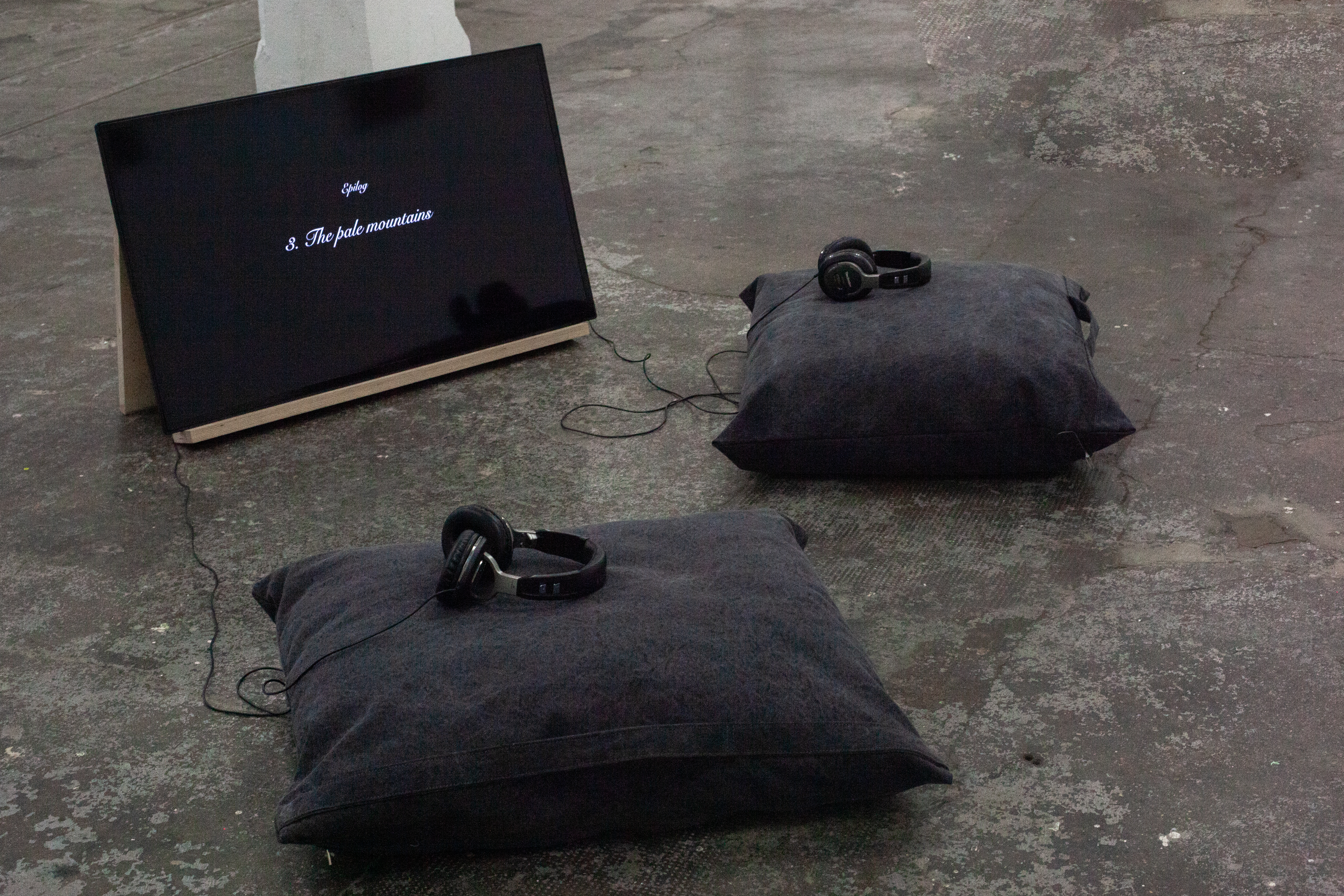
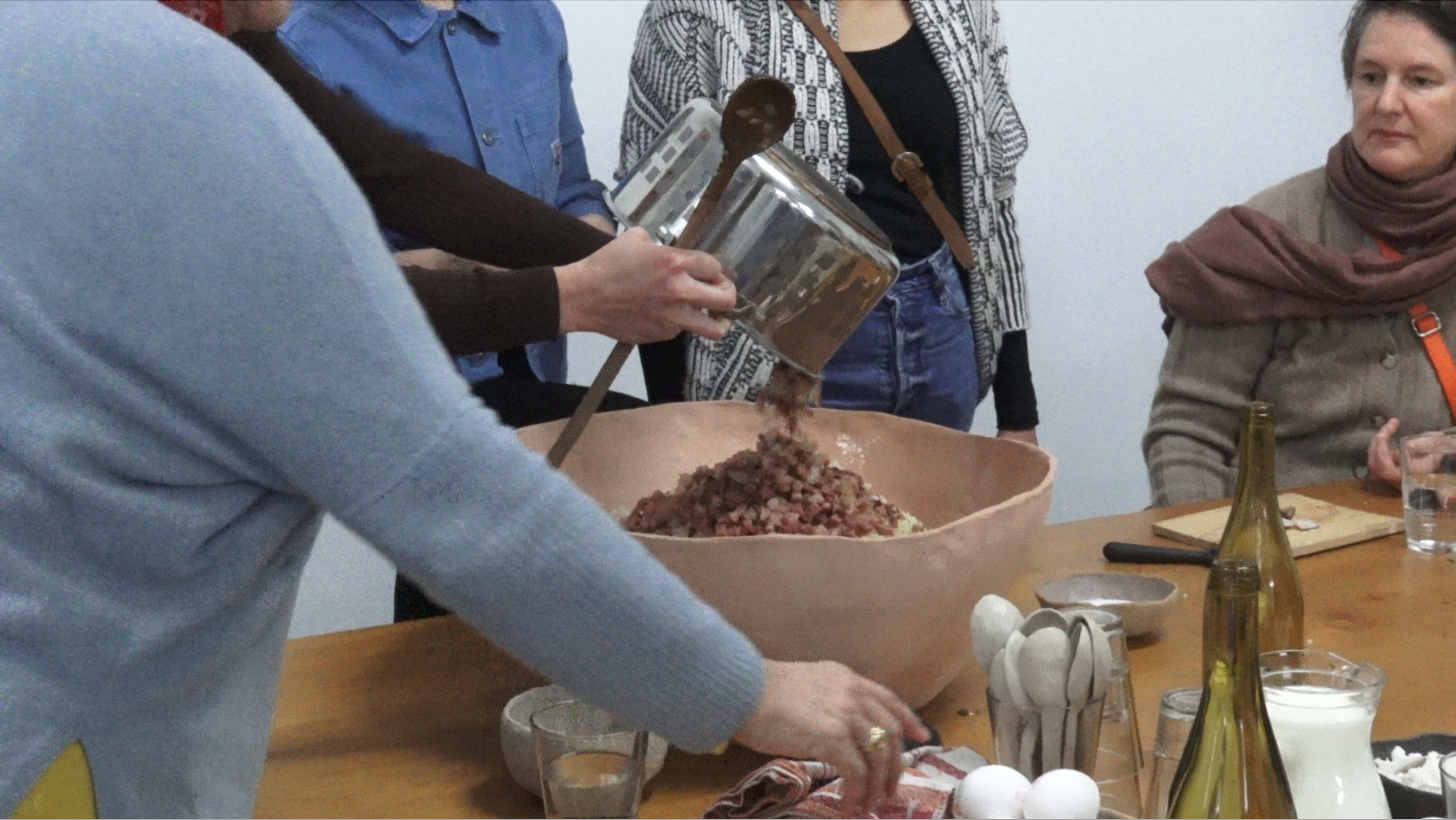

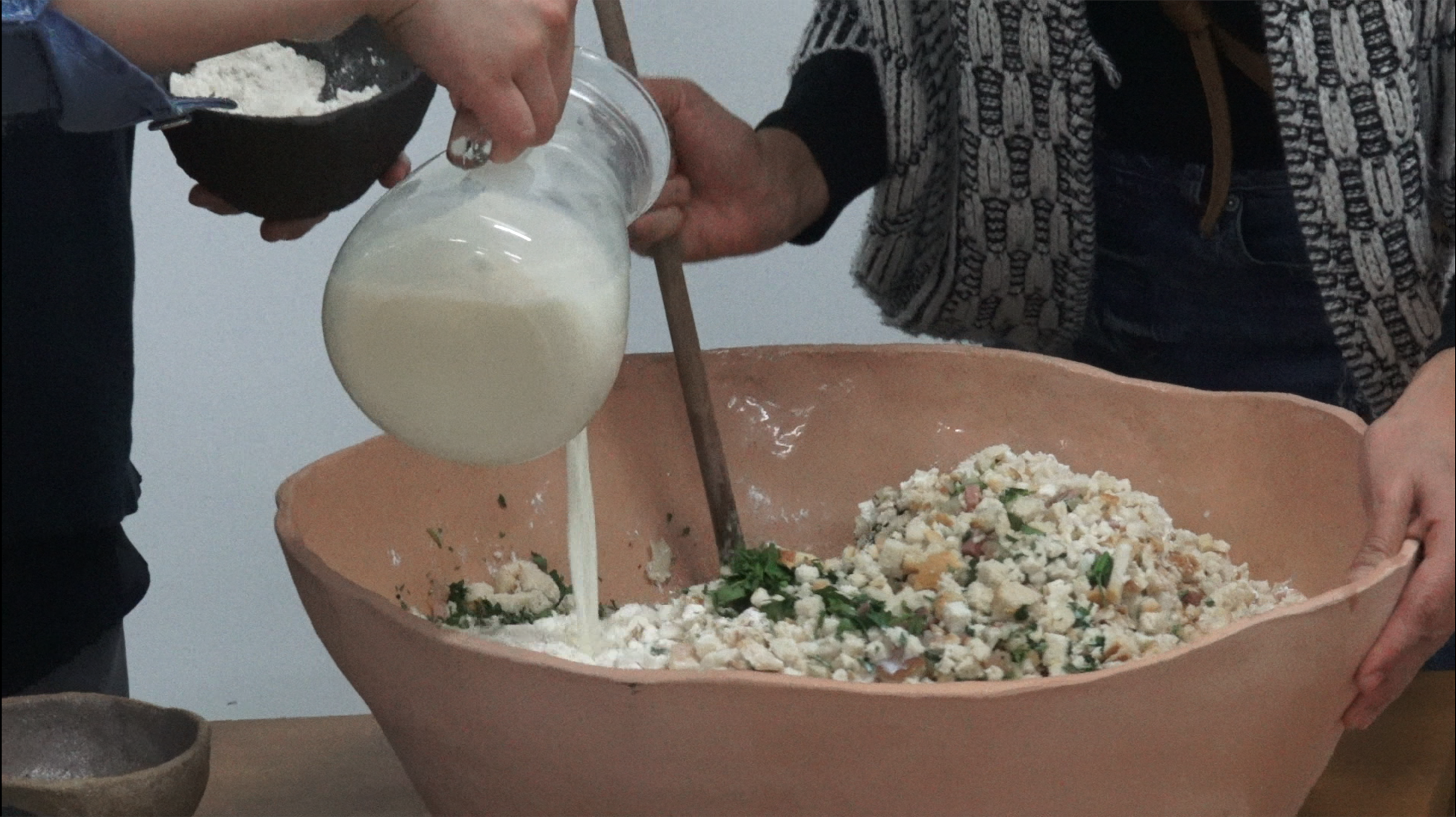
Images: Knödel – cooking intervention
The name Pandibosco (forest bread) emerged during a conversation with a family member about the transmission of stories and food traditions, reflecting the challenges of forest and mountain life. This ongoing project explores mythologies and cultural movement through „poor cuisine.“ These dishes reveal cultural interconnections.
Central to Pandibosco is the Knödel, an Alpine dumpling made from old bread. The Alps serve as a cultural crossroads, shaped by both hardship and diverse influences. The earliest depictions of dumplings appear in 12th-century frescoes, and mythical creatures show the influence of travelers from Mesopotamia and Greece—not just carried by people, but also through stories. These elements appear in egg tempera paintings, evoking alpine folklore.
The work includes the video Memories of an Empty Stomach, which presents interviews with two nuns who recount their childhood memories and daily food consumption before the 1950s. These oral histories are interwoven with personal footage from my grandfather‘s Super 8 camera, capturing mountain landscapes —a symbol of longing and the boundless imagination of distant connections.